Unprecedented in its scale, this set intended for the worship of two unidentified deities was unearthed during development work in a village near Rennes. Entered into activity after the Roman invasion of Gaul, it gives an overview of the practices of the Celtic populations of the time, who had integrated the Roman heritage into their culture.
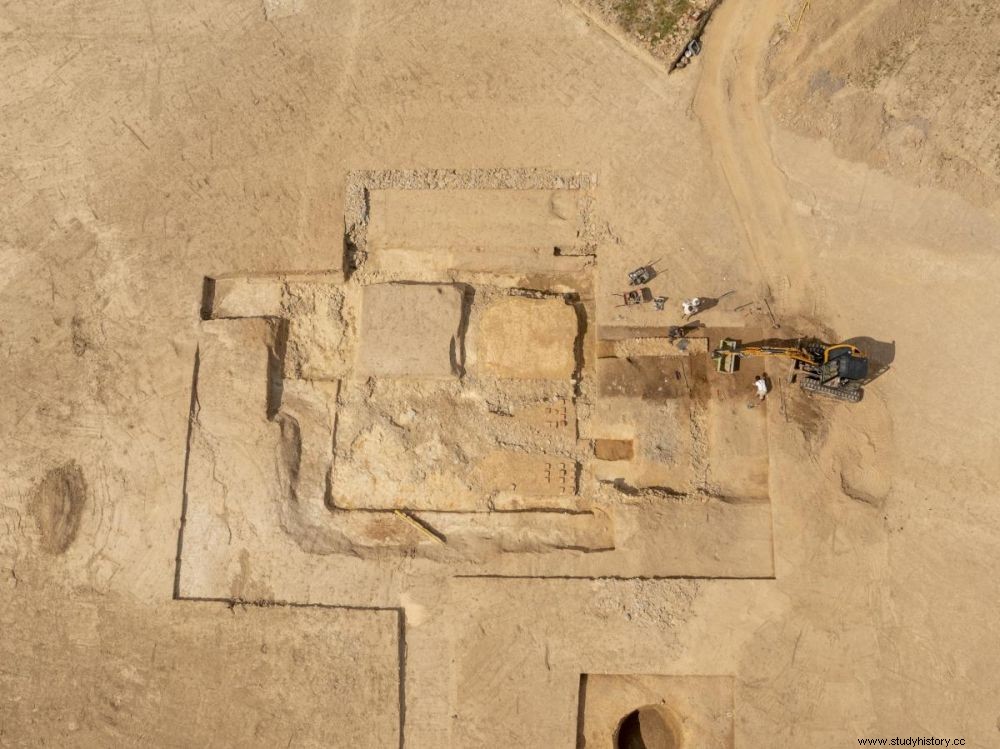
An aerial view of the thermal baths found as part of the preventive excavation of the sanctuary of La Chapelle-des-Fougeretz (Ille-et-Vilaine), in progress since March 7, 2022.
The field is immense, bare. Bordered by a housing estate and a fallow industrial zone, it will house more than 700 housing units, mainly small buildings, within a few years. The urban extension on these 30 hectares located on the edge of the village of Chapelle-des-Fougeretz, about twenty minutes from the center of Rennes, was not the easiest for the developers, the Giboire and Launay groups. But they were not unaware that since 1984, the year in which an aerial survey was carried out, archaeologists suspected the presence of a large vestige on this former agricultural land of Ille-et-Vilaine. Once the real estate project was definitively recorded, a dozen archaeologists from the National Institute for Preventive Research (Inrap) were thus able to begin an excavation that had been awaited for nearly forty years, by virtue of the obligation to probe the ground before any construction work. territory Development. The wait was worth it:on about 3.5 hectares, they unearthed an important Gallo-Roman sanctuary founded in the period following the Roman conquest, in the 1st century BC. The place of worship would have functioned for at least 500 years, until the 4th century of our era.
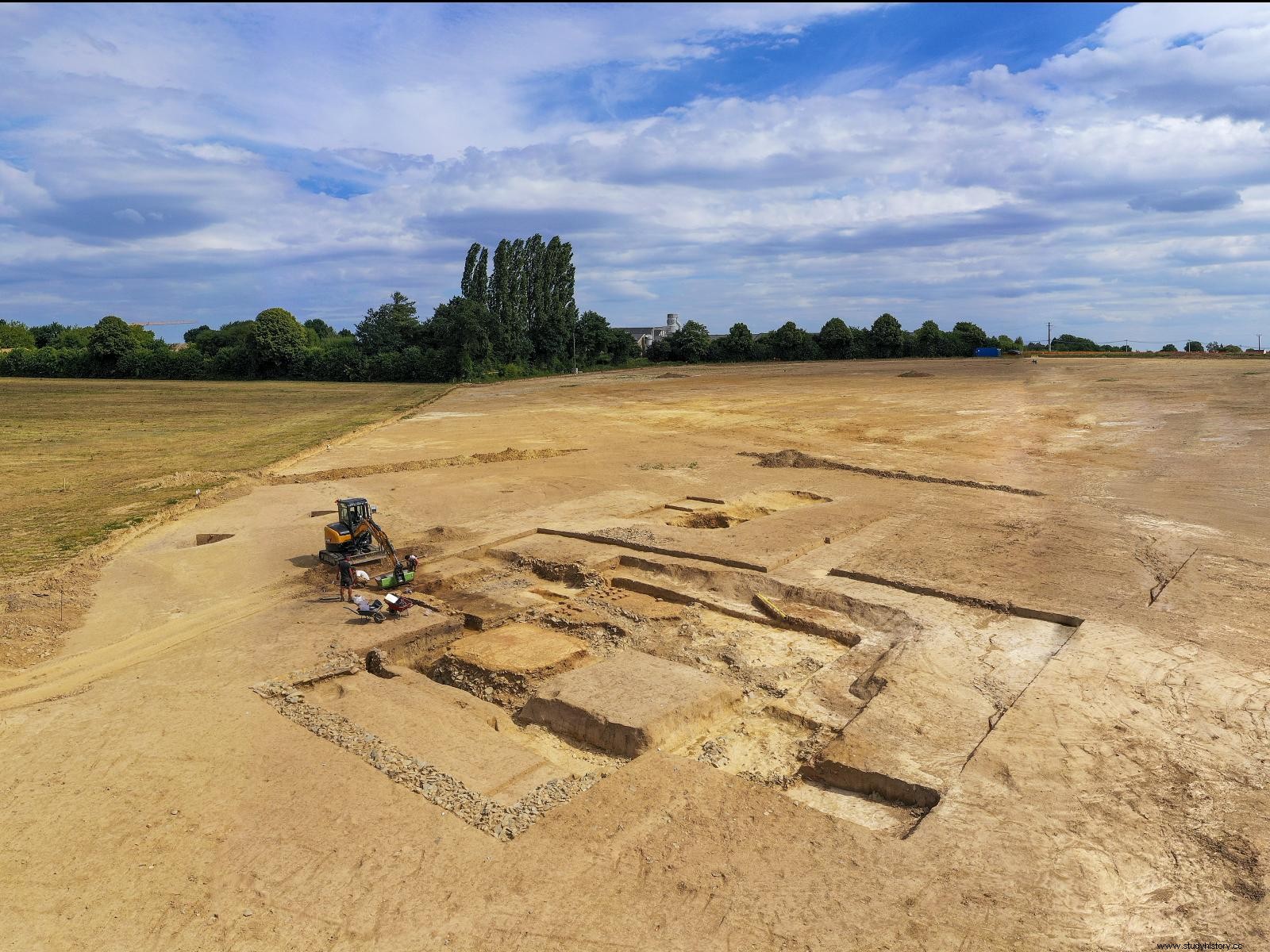
An aerial view of the excavation of the thermal building. Credits:Emmanuelle Collado/Inrap
An unprecedented overview
Very bare, since no wall remains - only the bases of the thick stone partitions and terracotta bricks are still visible, at best - this ancient religious complex is exceptional for a very specific reason:never a Gallo-Roman sanctuary could not be probed over such a large area, thus revealing to scientists the way it was organized at the time it was active. "It is a precious testimony because we have no written source on this period" , explains Bastien Simier, field archaeologist specializing in the Breton countryside at Inrap. "This type of large public sanctuary is not uncommon in Roman Gaul, but these remains have never been excavated in their entirety."
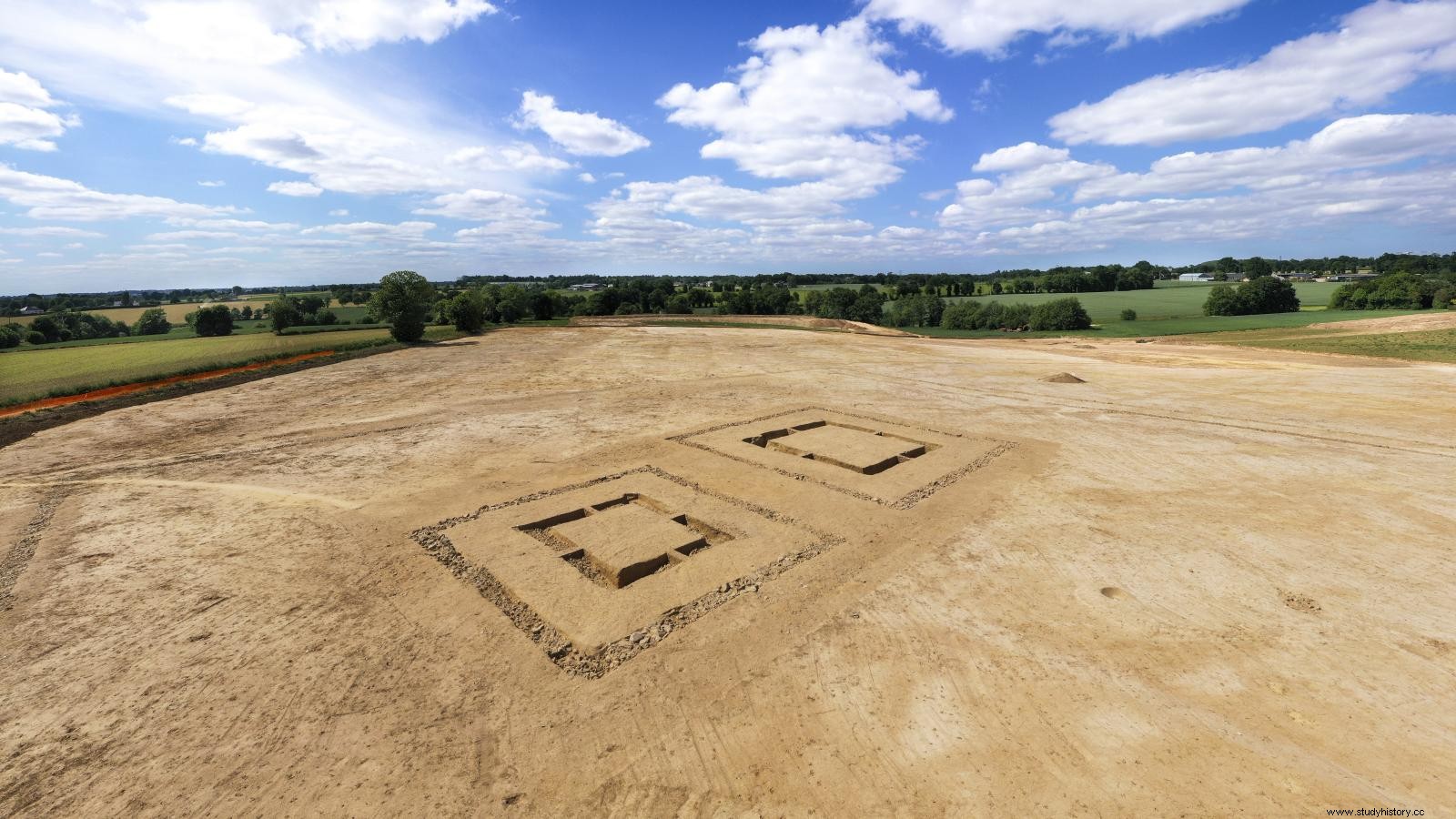
The sanctuary with, in the centre, the two temples of unequal size. Credits:Emmanuelle Collado/Inrap
Here, not only is the sacred space, delimited by a colonnaded gallery 60 meters on each side, preserved, but so is its environment:to the east of the sanctuary, ditches have yielded the remains of several dwellings, without probably occupied by the staff in charge of maintaining the link, when below, a few tens of meters from the sacred enclosure, a vast thermal building was revealed, to the delight of archaeologists who had not collected any clues to his presence. "Finding homes in this sacred context is relatively new" , welcomes Bastien Simier. "As for the thermal baths, they were a real surprise for us."
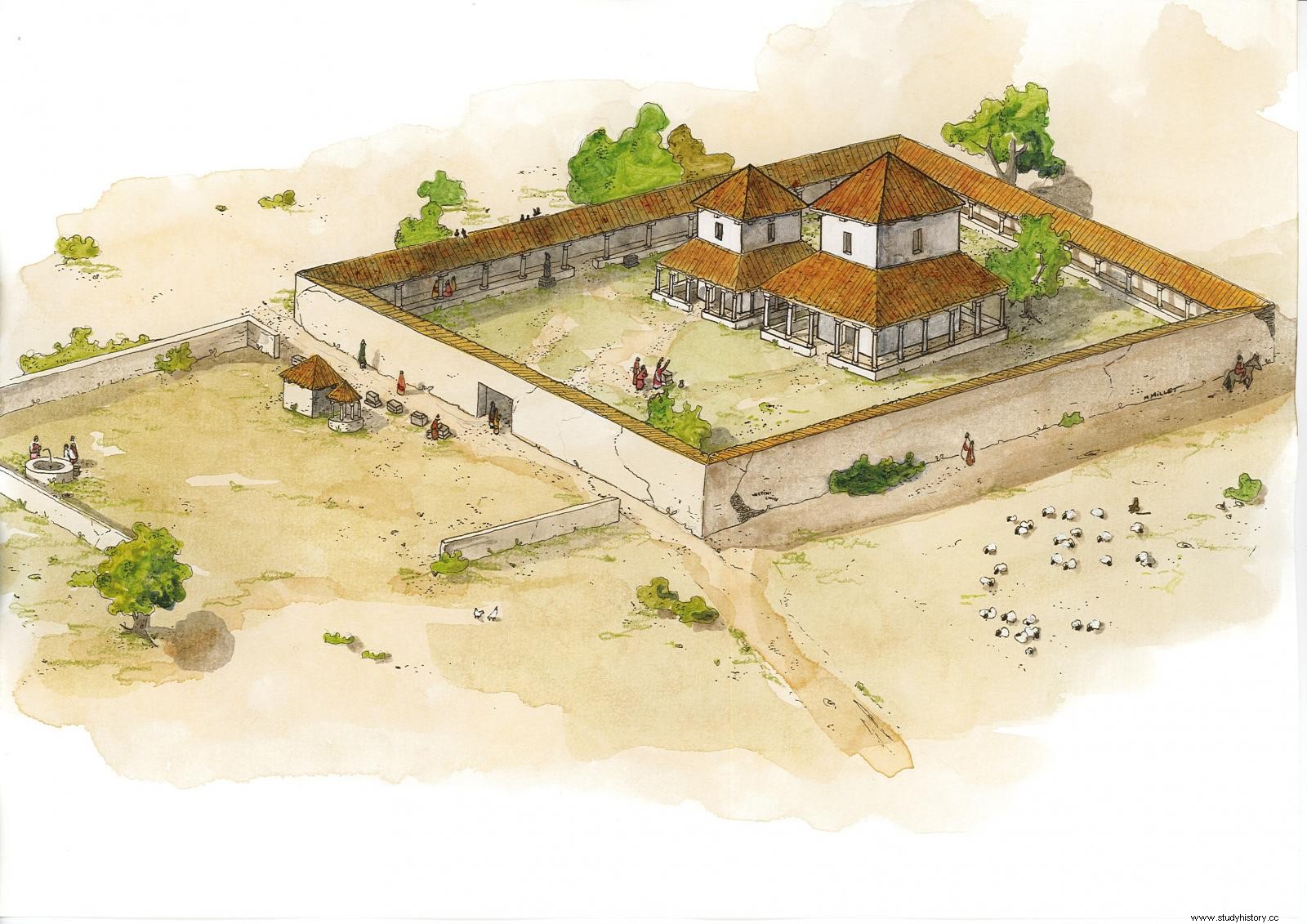 A reconstruction of the shrine. Credits:Inrap
A reconstruction of the shrine. Credits:Inrap
Figurine, cup and gold coin
Positioned on a hill, 10 kilometers from Condate Riedonum (the Gallo-Roman name of Rennes), the public building had to be visible from afar, reflecting the importance it had to occupy in the organization of the ancient life of the region. It was frequented by local Celtic people, the Riedones or Riedons which, from 52 BC. BC and the establishment of the Romans in Gaul, have constantly assimilated Roman religious and social practices. "We probably went there after great processions, where offerings and sacrifices were made to satisfy the gods" , assumes Bastien Simier. "The presence of an esplanade in front of the building suggests that not everyone could enter the sacred space, while a second sorting had to be done once inside, in front of the temples. " Two in number and built on the same plan - the fanum , typical of Gaul -, the latter presented a central piece (the cella ) in which was the statue of the divinity and, all around, a gallery dedicated to the devotions and wanderings of the faithful.
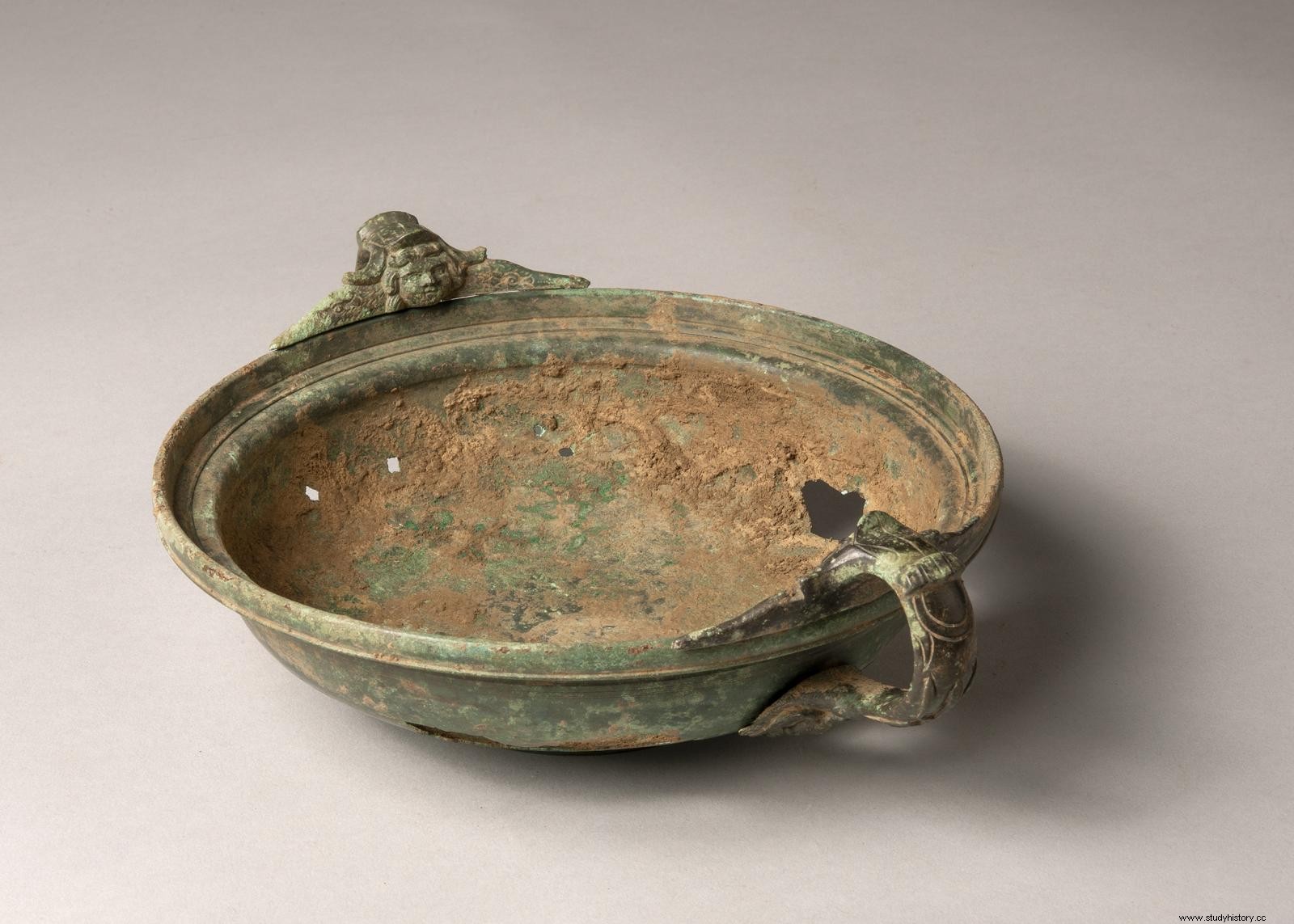
Credits:Emmanuelle Collado/Inrap
Unfortunately, it is still unknown which gods were worshiped there, although a small bronze statuette of Mars, found in one of the adjacent dwellings, suggests that at least one of the temples was dedicated to him. Far from the warrior image of the god of war whose status he occupied among the Romans, Mars was in Roman Gaul "a more benevolent, protective figure" . Among the few objects unearthed, there is also a bronze cup on which figures an eagle and a thunderbolt, a certain reference to Jupiter, but also smaller objects that we ultimately expect to find within a sanctuary:fibulae or even coins, one of which, in gold, displays the figure of the wolf with, clinging to her breasts, the legendary founders of Rome, Romulus and Remus. "A single piece of these gold coins was worth the equivalent of a year's salary for a soldier. It is therefore a sign that very wealthy people went to this shrine" , says Bastien Simier.
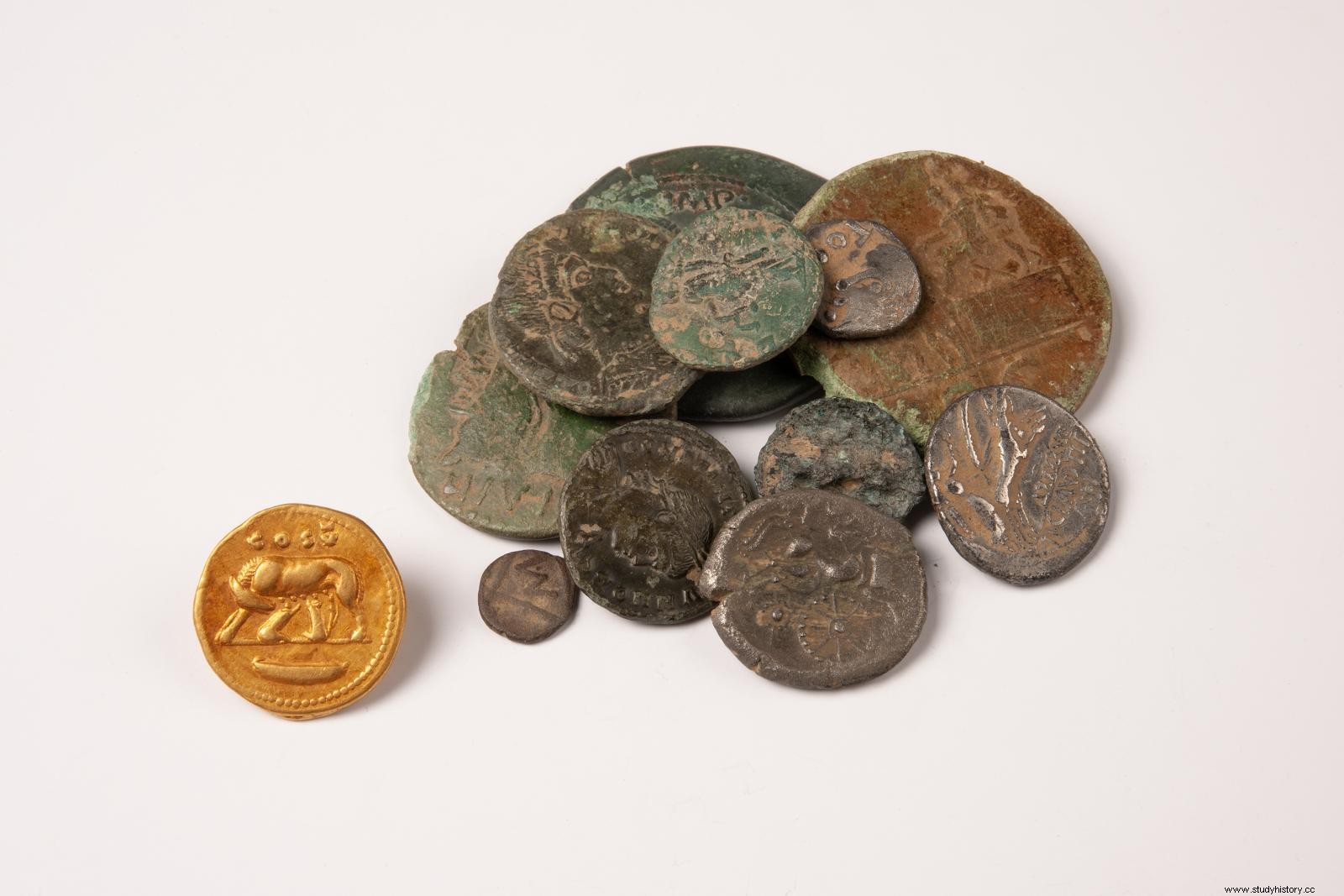
Credits:Emmanuelle Collado/Inrap
Race against the clock
For the moment, only half of the land where the excavation was planned has been surveyed. "It is quite possible that we will find other things on the remaining 3.5 hectares" , hopes the archaeologist. Forced to hang up the shovels and chisels next October, he and his team will nevertheless have to arm themselves with elbow grease. "We'll get there!" , he launches, optimistically, before listing still other operations to be carried out before the concrete and the tar come to cover these stones of the past forever. He wishes to dig, for example, deeper at the level of the sacred enclosure in order to find any traces of a building prior to the Gallo-Roman building, or even to comb the wells in order to detect materials. organic, mines of information to reconstruct the daily life of the time.
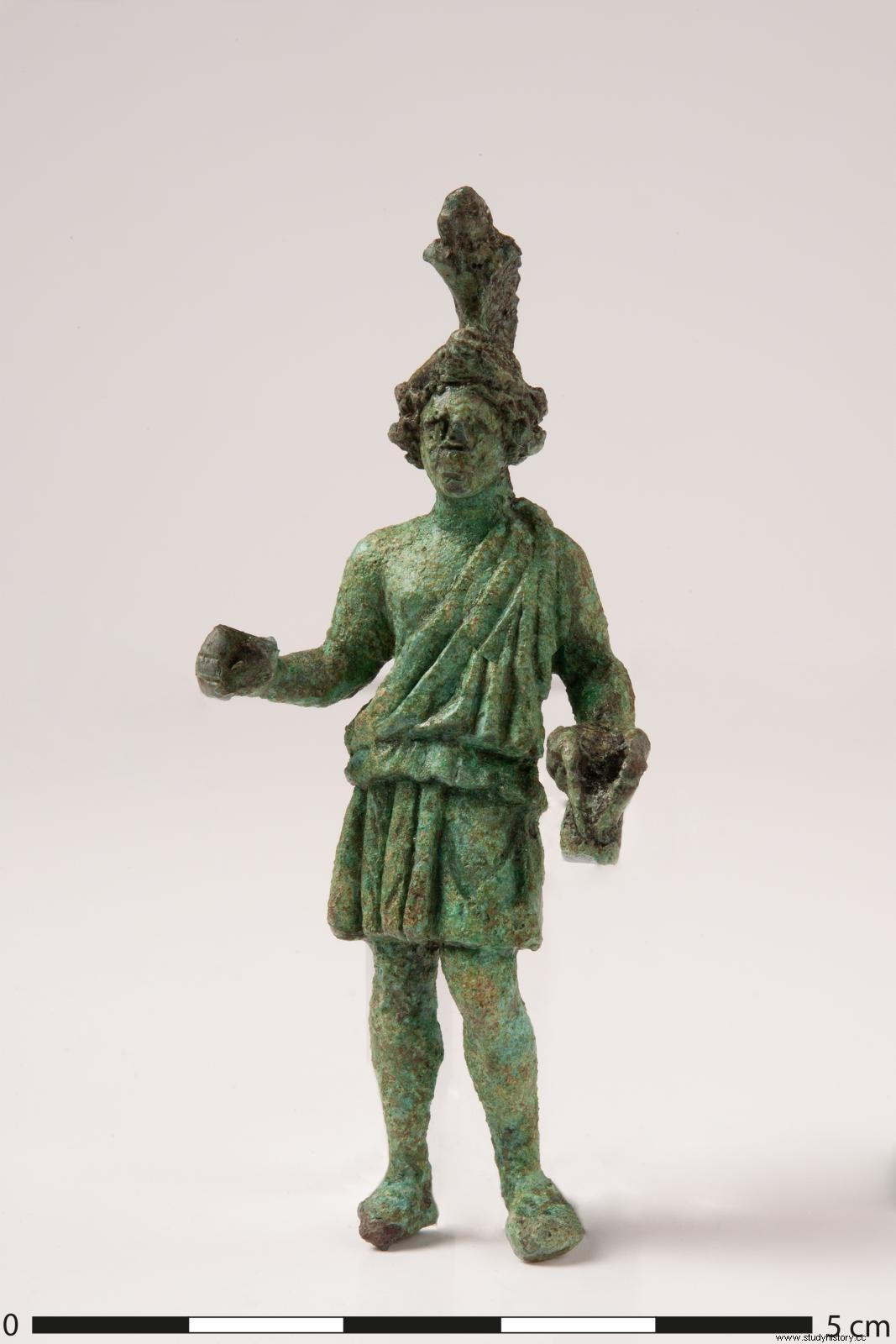
The small figurine of Mars found in a house a few meters from the sanctuary. Credits:Emmanuelle Collado/Inrap
The stakes are all the greater since "this excavation promises to deliver a whole lot of information on the way of life of the Gallo-Romans, the organization of the countryside and the origin of our terroirs" , enthuses the archaeologist who, as a good professional, does not seem to be moved more than that by the planned disappearance of this barely discovered site. "It's the game of preventive searches..." Without a real estate program, there would have been no excavations. And without excavations, there would be no sanctuary of the Chapelle-des-Fougeretz to reference in our annals. In the meantime, those who have the possibility will be able to visit the site free of charge during the European Archeology Days, on June 17, 18 and 19, led by Inrap under the aegis of the Ministry of Culture.
